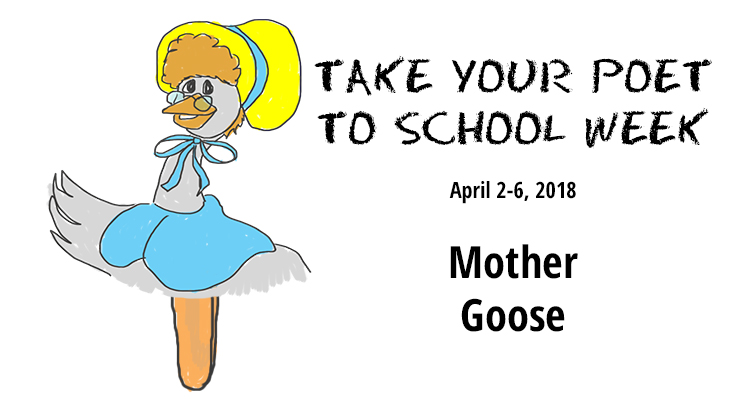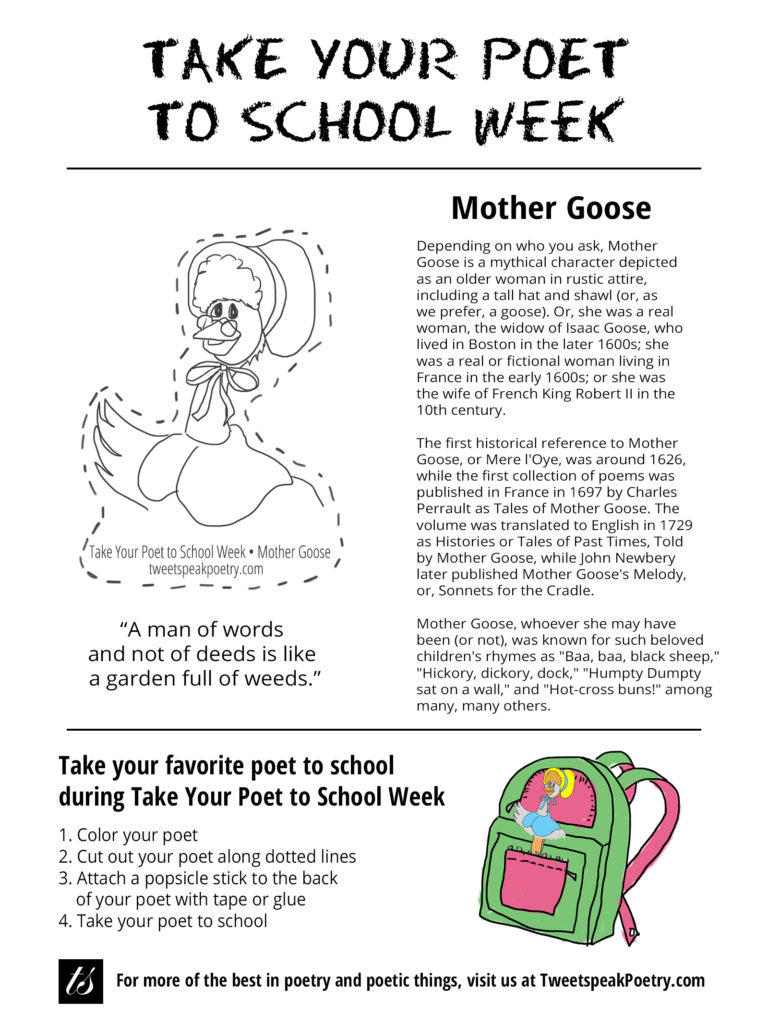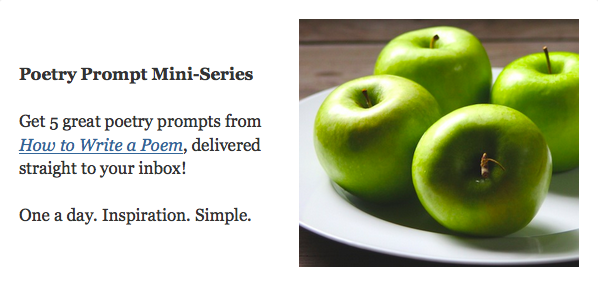
Take Your Poet to Work Day is one of the happiest days of the year. It is marked by only the tiny sadness that it takes place in the summer. Teachers and librarians join in as best they can (sometimes from the beach—thus, we note, the sadness is but tiny) in July, but they do let us know they would love to be able to celebrate when school is in session.
This year, for the first time, we’ll be celebrating Take Your Poet to School Week (yes, all week!) during the first full week of National Poetry Month (for 2018, that’s from April 2-6). The week will culminate with Poet in a Cupcake Day on Friday. (We do not anticipate any cause for sadness over this.)
So now, in the spring, instead of poets peeking out of briefcases or beach totes (as they do in July), you might see them in a backpack. You might see them looking out the window of a school bus. You might even see them trying their darndest to get picked for dodge ball during recess. (I can assure them, if any ask, that it is not worth the trouble.)
We’ll be adding a few faces to our poets-on-a-stick collection over the next couple of weeks, and we also invite teachers, librarians and students everywhere to take one of our other poets from prior years of Take Your Poet to Work Day celebrations (they’d love to go to school *and* work). Watch for an update of our coloring book with those new faces, as well as fun new cut ‘n color cupcakes to plop your favorite poet into (in case you’d rather not bake or find real cupcake frosting just a little too sweet).
Check out previously released Robert Louis Stevenson and Ogden Nash, and this week, welcome Mother Goose to the club.
Take Your Poet to School Week Cut ‘n Color Printable Mother Goose
Download Take Your Poet to School Printable Mother Goose
Depending on who you ask, Mother Goose is a mythical character depicted as an older woman in rustic attire, including a tall hat and shawl (or, as we prefer, a goose). Or, she was a real woman, the widow of Isaac Goose, who lived in Boston in the later 1600s; she was a real or fictional woman living in France in the early 1600s; or she was the wife of French King Robert II in the 10th century.
The first historical reference to Mother Goose, or Mere l’Oye, was around 1626, while the first collection of poems was published in France in 1697 by Charles Perrault as Tales of Mother Goose. The volume was translated to English in 1729 as Histories or Tales of Past Times, Told by Mother Goose, while John Newbery later published Mother Goose’s Melody, or, Sonnets for the Cradle.
Mother Goose, whoever she may have been (or not), was known for such beloved children’s rhymes as “Baa, baa, black sheep,” “Hickory, dickory, dock,” “Humpty Dumpty sat on a wall,” and “Hot-cross buns!” among many, many others.
Post and illustrations by LW Lindquist.
_________________________________
- Earth Song Poem Featured on The Slowdown!—Birds in Home Depot - February 7, 2023
- The Rapping in the Attic—Happy Holidays Fun Video! - December 21, 2022
- Video: Earth Song: A Nature Poems Experience—Enchanting! - December 6, 2022


L.L. Barkat says
This grandmotherly Mother Goose just makes me so happy. She’s fun! 🙂
(And now I’m trying to think… what other mythical poets are there? Hmmm. There must be some. )